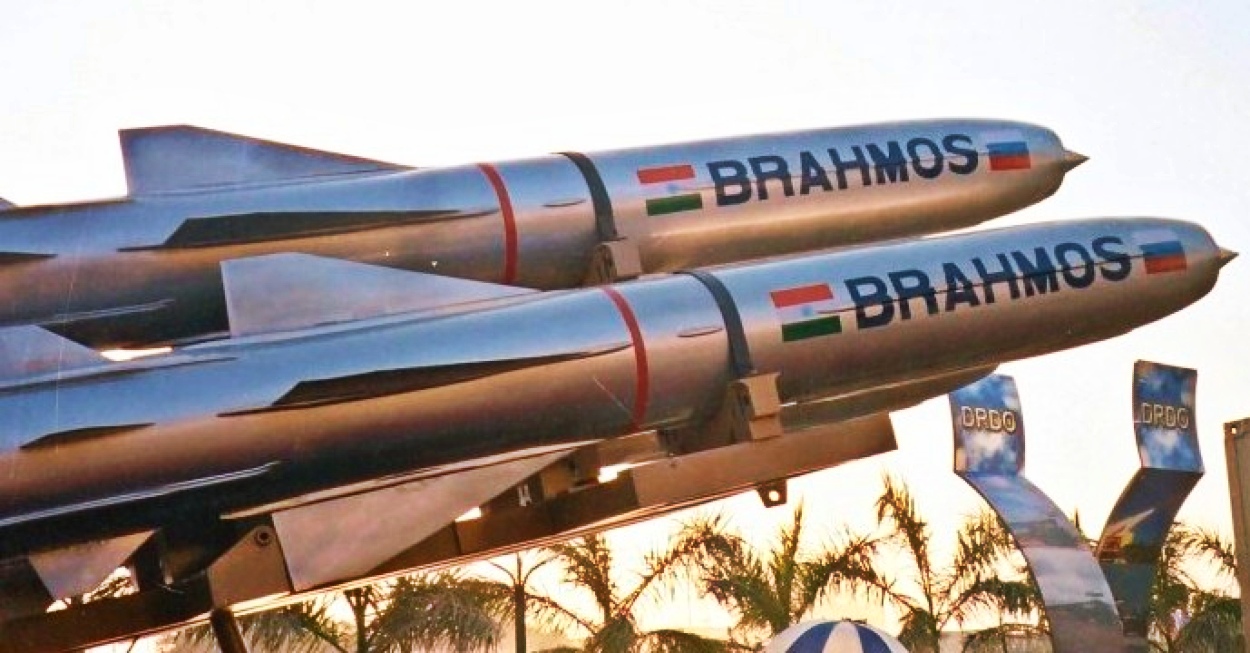On the night of March 9, 2022, the two nuclear-armed neighbors in the Indian subcontinent came on the brink of a major confrontation when a supersonic cruise missile of the Indian Air Force (IAF) was fired and landed in an unpopulated area of Pakistan.
Two years later, the IAF revealed the cause behind the “accidental” firing of the missile, but the Pakistan-based think tank, CISS, is poking holes in the theory.
A BrahMos missile was fired on March 9 around 7 pm from a base near Ambala and landed some 124 km away at Mian Channu in Pakistan’s Punjab province. The nuclear-capable land attack missile was not carrying any warhead. The incident does not have a precedent in nuclear armament history.
Pakistan claimed it tracked the launch of a “supersonic projectile” from Sirsa, an air force base in North India. But despite the claimed tracking, Pakistan could not engage/intercept the missile.
In 2024, the IAF told the Delhi High Court that the accidental firing of a BrahMos supersonic missile was due to its combat connectors ‘staying connected to the junction box,’ leading to the BrahMos being misfired.
This is the first time the IAF has revealed the reason behind the incident.
“The combat crew, (despite) knowing that that the combat connectors of combat missiles are connected to the junction box, failed to intervene to prevent the Mobile Autonomous Launcher commander from committing an unsafe act of launching the Combat Missile, resulting in a launch into the neighboring nation, thereby causing a potential threat to any airborne/ground object/personnel,” the IAF noted in its reply to the high court.
The IAF set up a Court of Inquiry (CoI) to look into the misfire and found three officers of its Combat Team responsible for ‘various acts of omission and commission leading to the firing of the missile.’ The officers are challenging the CoI in the Delhi High Court.
The Islamabad-based think tank released a study titled “Accidental, Inadvertent or Deliberate Launch: The Case of Indian Air Force’s Launch: The Case of Indian Air Force’s Nuclear Supersonic Cruise Missile.”
The study ruled out “accidental launch and offers implications of either inadvertent or, most likely, deliberate targeting of Pakistan during peacetime.” The author, Dr. Atia Ali Kazmi, presented evidence against the accidental launch by scouring an open-source examination of the missile’s components, safety protocols, and the circumstances surrounding the alleged accidental launch.
Pakistan Pokes Holes In IAF’s Logic
BrahMos is a nuclear-capable supersonic cruise missile known for its speed, precision, and firepower. The land-based version with the IAF has two critical components: the combat connectors and the junction box.
Combat connectors are interfaces that enable communication between the missile system and its launcher’s control systems for command inputs, status monitoring, and activation signals. The junction box acts as a central hub for electrical and data connections, crucial for the missile’s ability to adapt its flight path and targeting in response to commands or new intelligence.
These combat connectors are engaged or activated at specific times during the missile’s preparation and flight phases, playing a crucial role in ensuring the missile receives initial targeting data, system checks, and status updates. Even once launched, these connectors might continue to provide real-time data and receive mid-course corrections.
The report contends: “During transportation for maintenance or upgrades, connections might be made differently for diagnostic checks, software updates, and system tests. Safety protocols during these procedures are stringent to prevent any unintended activation of the missile’s systems.”
Recounting multiple safety features that advanced missile systems like BrahMos incorporate, the author enlists, including mechanical and electrical safeties, coded arming sequences, and launch authorizations, to prevent accidental launches.
“Fail-safe mechanisms typically include multiple authorization codes, electronic locks, and physical disabling when not in operation, minimizing the risk of accidental firing,” the report notes.
“This detailed technical background on BrahMos raises the question of why the Combat Team was transporting the missile in a ‘live state’ for a so-called ‘inspection?’ Logically, the missile should have been transported in an ‘inert state.’
Despite these elaborate safety measures in place, India claims that an accidental launch occurred, highlighting protocol and safety measures breakdown. This explanation seems a flimsy excuse and cover-up for a deliberate launch,” the author concludes.
Missiles are typically transported in a non-operational state, devoid of fuel and secured with safety mechanisms, a status known as inert condition. The CISS study quotes from the petition of the Indian officer who was held responsible for the misfiring that they were transporting a ‘live weapon.’
The report contends that this live weapon transportation signifies “an alarming readiness for immediate action.” It says, “This revelation shows that the target data related to Mian Channu was pre-programmed into the launcher, marking it as a predetermined target within the IAF’s strategic framework. Hence, it was not an accidental launch.”

India Fired To Gauge Pakistan’s Response
The study says that a deliberate missile launch to gauge Pakistan’s reaction could “dangerously be misinterpreted as Islamabad’s restraint and incapability.”
“Such a miscalculation, aiming to test new military technologies and anticipate Pakistan’s countermeasures, could have catastrophic outcomes. There is no way to predict how Pakistan will respond in the future,” opines the author.
The author suggests that Pakistan could also follow a Cold War strategy—‘Launch on Warning’—after detecting an incoming missile. This strategy entails a pre-emptive counterstrike upon confirmation of a strike by ensuring a guaranteed retaliatory capability.
- Ritu Sharma has been a journalist for over a decade, writing on defense, foreign affairs, and nuclear technology.
- The author can be reached at ritu.sharma (at) mail.com
- Follow EurAsian Times on Google News




